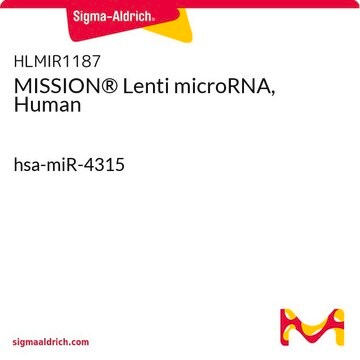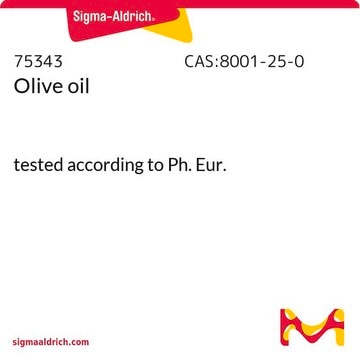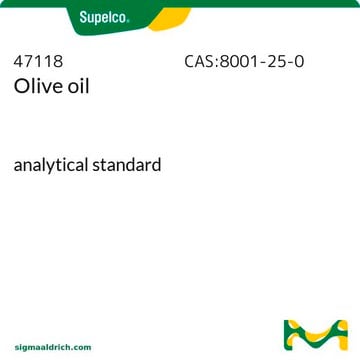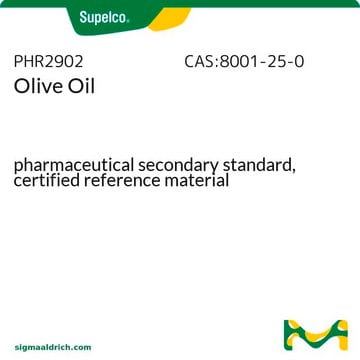Recommended Products
form
liquid
Quality Level
quality
highly refined, low acidity
density
D20/4, 0.895-0.924
functional group
ester
oleic acid
lipid type
oils
shipped in
ambient
storage temp.
room temp
Looking for similar products? Visit Product Comparison Guide
General description
Olive oil is rich in the phenolic component, squalene glucoside. The extra-virgin olive oil (VOQ) is antioxidant rich and a potential reactive oxygen scavenger. Olive oil is rich in monounsaturated long-chain fatty acids and is not prone to oxidation. Olive oil impairs xanthine oxidase activity and could have potential in modulating tumor progression. The biophenols in olive oil may elicit protection in metabolic disorders, cardiovascular diseases and neurodegeneration.
Application
Olive oil has been used as an oral supplement for metabolic phenotyping in mice . It has been used for dissolution of vitamin E, whey proteinand drugs.
Biochem/physiol Actions
The health benefits of olive oil result from its higher proportion of monounsaturated fats, as well as its antioxidant constituents: hydroxytyrosol, oleuropein and oleocanthal.
Storage Class Code
10 - Combustible liquids
WGK
WGK 1
Flash Point(F)
235.4 °F - closed cup
Flash Point(C)
113 °C - closed cup
Choose from one of the most recent versions:
Already Own This Product?
Find documentation for the products that you have recently purchased in the Document Library.
The antioxidant/anticancer potential of phenolic compounds isolated from olive oil
Owen RW, et al.
European Journal of Cancer, 36(10), 1235-1247 (2000)
Felipe de Salas et al.
Applied and environmental microbiology, 81(13), 4351-4357 (2015-04-19)
Ophiostoma piceae CECT 20416 is a dimorphic wood-staining fungus able to produce an extracellular sterol-esterase/lipase (OPE) that is of great biotechnological interest. In this work, we have studied the morphological change of this fungus from yeast to hyphae, which is
Voluntary exercise reverses immune aging induced by oxidative stress in aging mice
Lee JY, et al.
Experimental Gerontology (2018)
Enteroendocrine-derived glucagon-like peptide-2 controls intestinal amino acid transport
Lee J, et al.
Molecular Metabolism, 6(3), 245-255 (2017)
Kyung-Taek Rim et al.
Safety and health at work, 6(3), 184-191 (2016-03-02)
Chemical mutagenicity is a major hazard that is important to workers' health. Despite the use of large amounts of allyl chloride, the available mutagenicity data for this chemical remains controversial. To clarify the mutagenicity of allyl chloride and because a
Our team of scientists has experience in all areas of research including Life Science, Material Science, Chemical Synthesis, Chromatography, Analytical and many others.
Contact Technical Service








